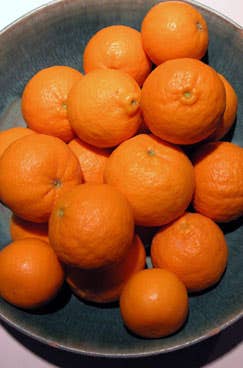
The fruit situation gets bleak in early spring, when clementines and pomegranates fade and plums and peaches are still months off—which makes the annual appearance of the tiny, intensely sweet, seedless pixie tangerine each March particularly welcome. A late-ripening mandarin variety developed at the University of California at Riverside in 1927, it was released for production in 1965, with low expectations. The fruit was pale and downright runty, and consumers forsook it for larger, brighter citrus. Also, it was fussy, turning out bland-tasting fruit in some areas and yielding a decent crop only every other year. When a few farmers tried it out in the citrus-growing Southern California town of Ojai, however, the results were phenomenal—and nearby scientists are working to help trees bear a bounteous amount of fruit annually. Now Ojai pixies sell like candy at greenmarkets and supermarkets and to restaurants like Berkeley's Chez Panisse.
Keep Reading
Continue to Next Story










